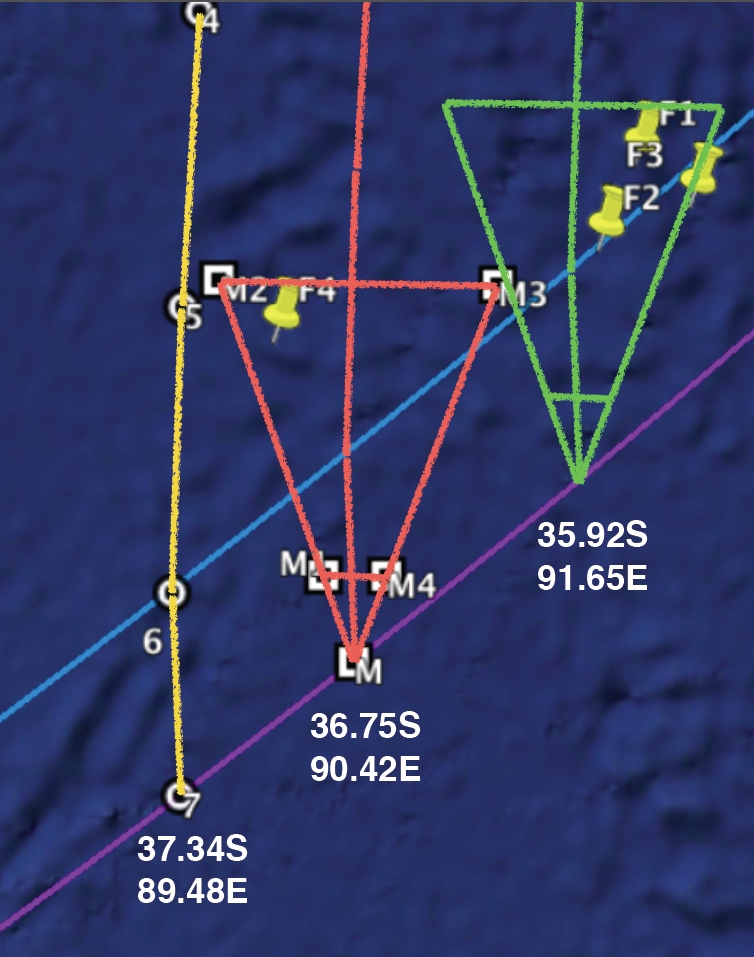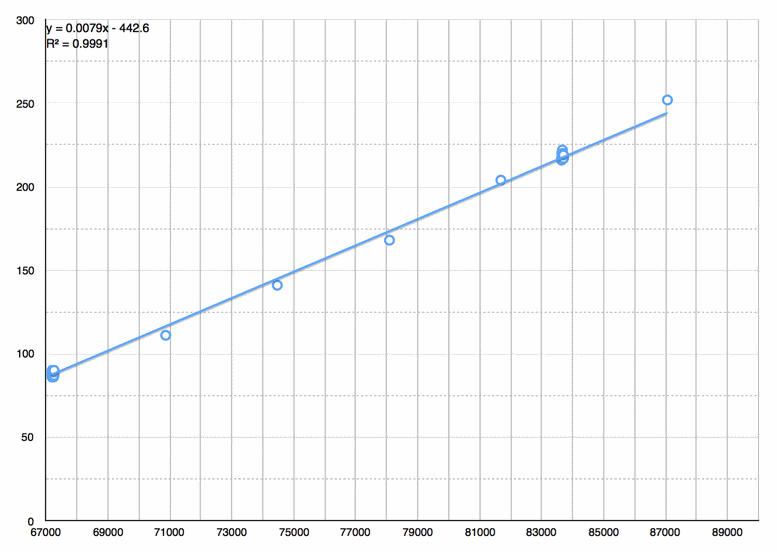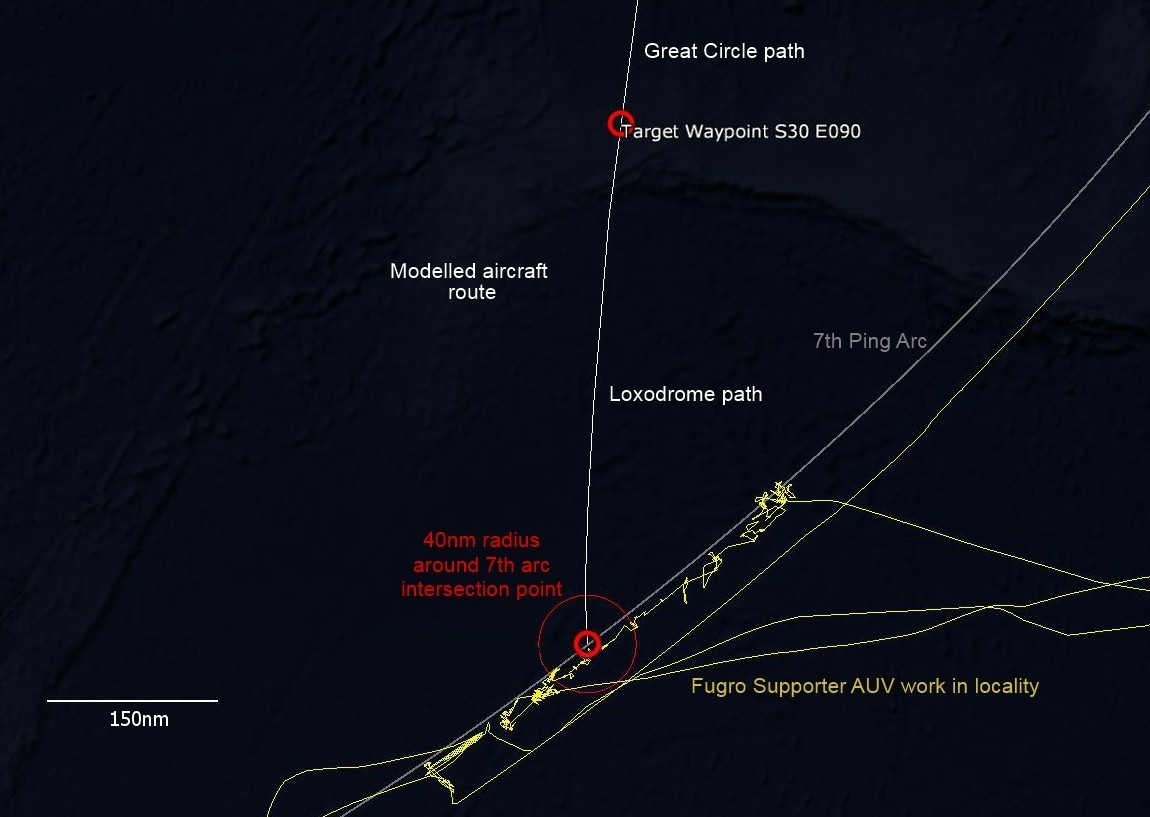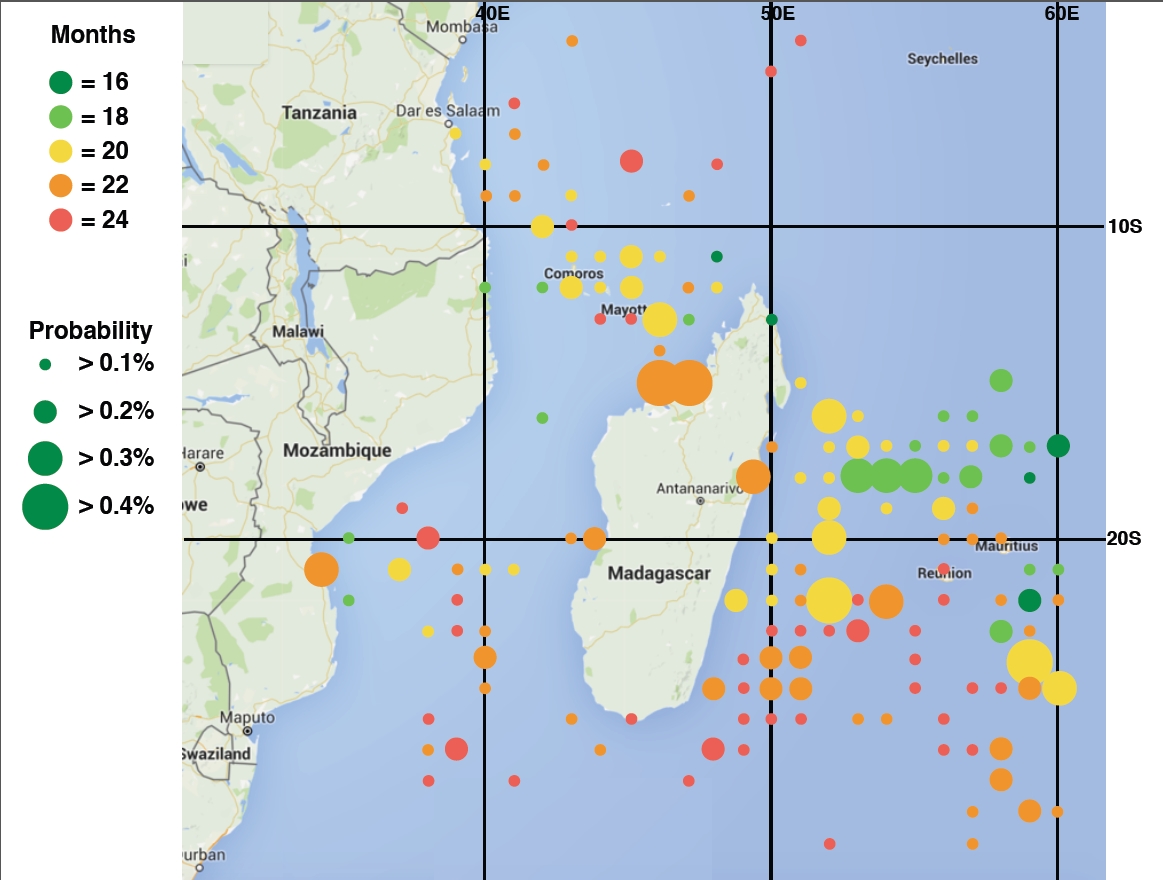Drift of floating debris from close to the 7th arc in the weeks following the crash of MH370
Richard Godfrey
2016 March 24th
Initial comments
The discovery (and sizes) of several pieces of MH370 (some awaiting confirmation) in La Réunion, Mozambique and South Africa, when coupled with geographical drift probability evaluations (see this post; a much more extensive report will be published here shortly), indicates that there must have been a large number of floating objects in the initial debris field. A lower-bound appears to be about 3,000 (discrete floating pieces).
It seems infeasible that such an extensive floating debris field could be overlooked, if the search aircraft had flown over it, even if half of the items had become waterlogged sunk within a few weeks.
In the analysis presented here I have used the same techniques for modelling drift speeds and directions as applied previously (i.e. using the adrift modelling tool). In the present case I am considering short-term/limited-distance drift distances and directions. Whilst the French satellite data are from about 14 days post-crash, here I have used a canonical time step of 20 days; the resulting distances drifted are scalable.
Summary of drift outcomes
Starting at latitude 37S and on the 7th arc, floating debris would have drifted 44 NM on average after 20 days, rendering an average speed of 0.10 knots. The average bearing of the drift direction is 060° (i.e. close to northeast), with a dispersion of ±20° about that mean direction.
Starting at 34S (on the 7th arc), debris would have travelled on average 68 NM after 20 days, at a mean speed of 0.14 knots and on an average bearing of 331° (i.e. between northwest and due north), with a dispersion of ±15°.
The drift speeds found in the above examples vary from 0.05 knots to 0.22 knots. Coupled with the dispersion in drift directions indicated above this leads to an anticipation that any floating debris field will spread substantially within 20 days, and more so as time goes on. It is notable, however, that even after two months fully 69 per cent of debris items starting at 37S remain within the same geographical cell (one degree by one degree in latitude and longitude) as each other; for the assumed start position at 34S the fraction remaining within one cell is 85 per cent.
In view of this, it seems that the likelihood of the majority of debris remaining clustered after 20 days is quite high. That is, after 20 (or 14) days a debris field should still be apparent compared to the ‘background’ of other floating objects.
Graphical representation of drift patterns
Let us consider a crash having occurred mid-way between the extreme locations of the suggested ‘gap’ between 35S and 38.5S on the 7th arc.
This midpoint is located at 36.75S 90.42E (point M in the map below). The dispersion in drift after 15 days (i.e. between March 8th and March 23rd; scaled from the calculations for 20 days) would potentially be into an area defined by an inverted isosceles trapezoid, where the four corners are at the following points:
36.3748S 90.2500E
35.0970S 89.6770E
35.0970S 91.1630E
36.3748S 90.5900E
These points are plotted in the following map and labelled as M1 through M4; the points labelled F1 through F4 are the four reported items of floating debris from the French satellite(s).

Drift patterns for crashes on the 7th arc. The purple line is the 7th arc, and the blue line is the 6th ping arc. The yellow line indicates the last part of the hybrid flight path as modelled by Thompson and Godfrey (i.e. based on the waypoint 30S 90E, and ending up at 37.34S 89.48E.). The location labelled M is the mid-point of the ‘gap’ on the 7th arc running from 35S to 38.5 S, the red near-vertical line indicating a similarly-modelled flight path required to conclude at that point. The trapezium delineated by the red lines joining points M1, M2, M3 and M4 indicates the spread of likely positions of floating debris 15 days after a crash at point M. The green flight path is to an end point 35.92S 91.65E; this was designed to fit the French satellite-spotted positions F1 to F3 into the nominal debris drift area (i.e. green trapezoid).
The area within the trapezoid defined by M1, M2, M3 and M4 is 11,770 square kilometres. The dispersed debris would be expected to be concentrated towards the centre of this area, perhaps covering about 25 per cent of it. This assumption would indicate that after 15 days most of the floating debris would lie within an area of about 3,000 square kilometres. Thus if there were about 3,000 floating items, there would be an average of one per square kilometre, although the spatial density would be highest towards the centre of such a debris field.
This might seem to be a low spatial density (one per square km), but remember that for an aircraft flying over such a debris field the sightings would go on and on, km after km.
Discussion
Whilst three of the French-reported items are closely clustered (F1, F2 and F3) and appear to be consistent with a crash located near 35.92S 91.65E, the fourth item (F4) was spotted some distance away. It would appear unlikely that all could have originated from a single start position on the 7th arc and simply drifted that far apart in 15 days.
Of course it is not known that these four items are indeed pieces of MH370, but in order to make forward progress in this analysis, let us assume that they are. We then ask: how could F4 have shifted so far from F1, F2 and F3?
One possibility is that F4 is actually the flaperon eventually found in La Réunion (or is some similar substantial piece of debris) and was dropped from MH370 prior to its crash into the ocean. It has been suggested that the appearance of the flaperon is consistent with it having been ripped from the aircraft wing by high-speed flutter.
Another possibility that could lead to a wider spread of floating debris, some items being separated from the others, is the extent to which individual pieces extend above the water; this would, of course, be dependent upon their density. Items projecting substantially above the water could be subject to wind-blown effects independent of the ocean current drift.
The wind was variable in this area during the 15 days in question, but overall would have blown debris subject to such an effect (‘windage’) in a northeasterly direction. The average surface wind strength was 11 knots. Thus if F4 had no windage (e.g. it was the flaperon) and F1 to F3 had some windage, this would fit against the red flight path (i.e. F1 to F3 were blown NE in addition to the effect of the current, whereas F4 was subject only to the current causing it to drift). One might even be able to fit to the yellow flight path, making assumptions about the relative windage values (which, of course, I am hesitant to do here).
Note added by Duncan Steel, March 25th: The locations of the four items (F1—F4) in the above map are towards the northern extremes of the drift trapezoids as calculated by Richard. However, the assumed start points for each are on the 7th arc; and the area within 20 NM of the 7th arc has already been subject to underwater search. Assuming that the underwater search has not missed an ocean-bottom MH370 debris field in this region, it might be suggested that the aircraft crashed north of the 7th arc and outside of the area already covered by the underwater search, so that the start point for the drift was actually north of those 7th arc locations utilised by Richard in forming this map.



